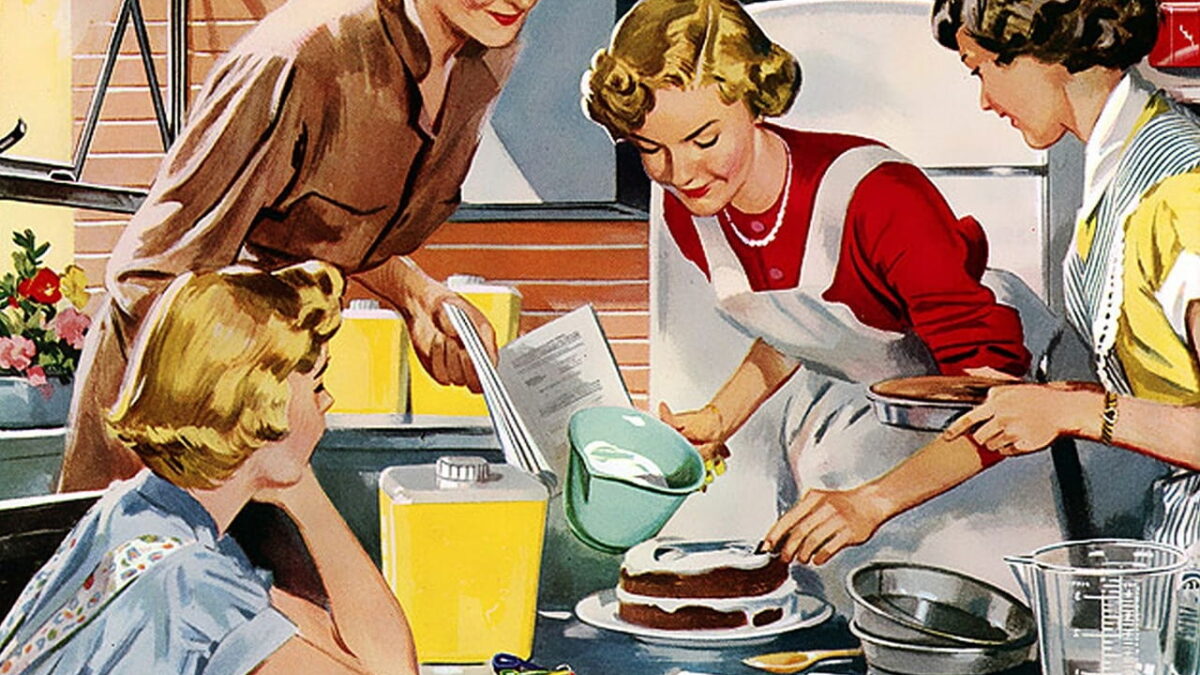Barbie has just introduced the Stevie Nicks doll, which harks back to Nicks’ early days with Fleetwood Mac. The preorders sold out in a flash. Nicks said on X: “When Mattel came to me asking if I would like to have a Barbie made in the ‘Rumours’ cover style, I was very overwhelmed. Of course, I questioned ‘would she look like me? Would she have my spirit? Would she have my heart…’” Nicks’ fears were put to rest upon seeing it. “I am her and she is me. She absolutely has my heart.”
Dolls aren’t a new love for Nicks, who spoke of her affinity for them in a 1992 interview with Vox magazine. Nicks’ home was decorated with dolls and lace, and she confessed a desire to dress like a rag doll. “She’s like a damsel in distress in her castle,” Vox reported, “and we’re in her fairyland lounge.”
Nicks is featured in my book, The End of Woman: How Smashing the Patriarchy Has Destroyed Us (Regnery, 2023), after I unearthed her candid remarks to Vox about her life, career, and four abortions. “‘To give up four (babies) is to give up a lot that would be here now. So that really bothers me, a lot, and really breaks my heart. But they’re gone, so …’ she composes herself. ‘But I couldn’t because I was too busy. And I had all these commitments.’”
Nicks, like many women before and since, prioritized career over family, seeing her obligation to her fans and those who worked on her tour as more important. She speaks of the heartbreak of the men with whom she had relationships and who were the fathers of her children. “Eventually, their hearts couldn’t take it, they couldn’t understand quite enough, how deeply embedded in this I was. And so it eventually hurt them too much and they had to leave, or face devastation on their own.”
In her new book, The Toxic War on Masculinity, Nancy Pearcey explains that men intuitively understand the difference between a good man and a real man. Sociologist Michael Kimmel asked thousands of men two questions, starting with cadets at West Point. What is a good man, and what is a real man? The characteristics of the good man, the cadets reported, are: “Honor, duty, integrity, sacrifice, do the right thing, stand up for the little guy, be a provider, be a protector.” The real man’s characteristics, on the other hand, are “tough, strong, never show weakness, win at all costs, suck it up, play through pain, be competitive, get rich, get laid.” The good man puts others before himself while the real man puts himself first. Despite years of the culture trying to tear down masculinity, this timeless distinction between a good man and a real man remains.
What happens when we apply the same questions to women: What is a good woman? What is a real woman? The answers are nowhere as easy and clear. The last 50 years have airbrushed any semblance of a good woman from the culture and replaced her with the working woman.
Roots of Feminism
In 1963, Betty Friedan dropped an ideological bomb on the world with The Feminine Mystique, which sold around 3 million copies in its first few years of publication. The blast can still be felt and seen today. In her book, Friedan makes the case that women need to leave the home to become truly free. What wasn’t obvious in the book was Friedan’s communist commitment and her Marxist goal to get women into productive work and outside the home. Using a blend of psychology and disguised Marxist argumentation, Friedan convinced millions of women to grasp the great good of a career.
Building on Friedan’s propaganda, feminism has been retinkering the popular conception of womanhood ever since. Although the feminist ideal is much older, hailing back to Percy Shelley’s articulation of the “independent woman” in the early 1800s, the independent working woman, unfettered by husband and children, became the new way women all over the world thought they ought to live.
This ideal woman was soon everywhere: She splashed onto the pages of glossy magazines such as Cosmo and Seventeen; she was on viral blogs, like Gwyneth Paltrow’s Goop; TV remade her again and again, from Mary Tyler Moore to Murphy Brown to Selina Meyer in “Veep;” and Hollywood made her a superhero, unencumbered by the demands of pregnancy or a smaller physique than her male counterparts. The ideal woman always kicks ass.
Ambition as Virtue
Gone was the good woman and her hallmark virtues, such as patience, loyalty, and compassion. These ideas were redefined as codependency, a kind of slavery, or only for women who were doormats. The virtues of the working woman ascended, taking center stage: self-reliance, ambition, focus, and strength. No family — no man, no child — would get in her way. Every few months, especially during award season, a new starlet comes out and thanks the universe for allowing her to get an abortion, lest her career would have been ruined by the demands of caring for a wriggling, wailing, dream crusher.
The Nicks story isn’t just about the sad reality of a mother ending the lives of her children because of her working obligations. It shows the mental discord created when women neglect what makes them good in order to embrace what makes them a Marxist. Sadly, Nicks’ love for dolls will never take the place of her children. Her life is a testimony to what happens when we give up our children for a much lesser good.
Certainly, Nicks, like so many other women who have followed Friedan’s advice, can be called many good things — a good singer, songwriter, and entertainer, or even a good Barbie doll. But few would be tempted to call her a good woman.









